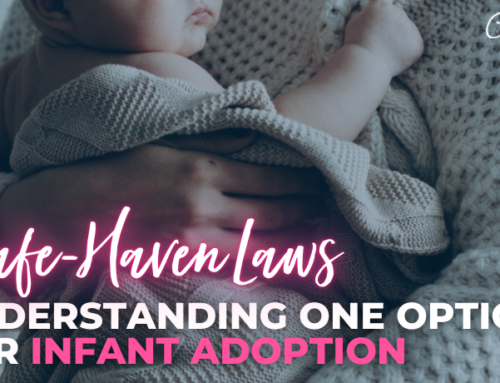Most people have heard of “the pill”, condoms, abortion, an IUD, and the “abortion pill.” They are all, broadly speaking methods of “birth control” – that is, methods that prevent a woman from giving birth. Some act as contraceptives, which are methods of making it difficult to conceive a child. But others operate after the moment of conception–the moment when the male’s sperm fertilizes the female’s egg.
An abortifacient is a method of birth control that operates after the point of fertilization, and it specifically refers to a chemical that causes the woman to have a miscarriage. An abortifacient is distinguished from a surgical abortion, in which the pregnancy is terminated by physically dismembering the baby. But the purposeful use of abortifacients do, in fact, constitute abortions when they result in the death of the baby.
Understanding How Pregnancy Occurs
The mother’s body prepares for pregnancy by a thickening of the lining of the uterus. This happens about before ovulation–that is, the release of one of her eggs. The egg travels from an ovary through a fallopian tube down to the uterus. If the egg is fertilized, it will implant itself on this thickened lining, about three days after fertilization. If it is not fertilized, then the uterus will shed its lining. (In rare cases, the egg will implant itself on the fallopian tube. This is called an ectopic pregnancy, and it can be life threatening to the mother.)
The shedding of the lining is why women experience menstruation, or a “period.” This is also why, when a woman becomes pregnant, she “misses” her period. What has happened is that the embryo has implanted itself on the uterus, and the mother’s body begins to supply the baby with the oxygen and nutrients through that lining that the baby needs to grow and to develop. Thus, the baby needs that lining to stay.
Ovulation generally happens between periods. It is only during ovulation that a woman can become pregnant; however, even for young women with “regular” periods, ovulation can happen at different times in a woman’s cycle. (At the same time, understanding your own ovulation cycle is also a method of natural birth control used by many women.)
Pregnancy is measured in weeks, calculated from the first day of your last period. Of course, a woman is not pregnant at the time she had this period; conception happened approximately two weeks later. However, it is the method used for determining the gestational age of a baby, and the due date is calculated as 40 weeks after this day.
How Do Abortifacients Work?
Abortifacients are any drugs that can cause a miscarriage anytime after conception. Some abortifacient drugs are not taken for the purpose of inducing a miscarriage, but can have that effect. This is why it is so critical for pregnant women to be careful about what they consume, both in terms of food as well as medications. In particular, medications that have beneficial effects for other issues can act as abortifacients, or cause other health problems for either or both the pregnant mother and the baby.
When speaking about birth control, abortifacients are drugs taken by women any time after the moment of conception for the specific purpose of inducing a miscarriage.
Abortifacients can operate in different ways. Some work by inducing premature labor, causing the mother to deliver the baby before it has fully developed, so that it is unable to survive. Others are simply toxic, causing the growing baby to die by being poisoned. However, many toxic abortifacients are toxic for the mother, as well. Abortifacients need not be prescription or over-the-counter medications. Some herbs or other substances can induce miscarriage, whether because of their toxicity or for other reasons.
Today, the most commonly used abortifacient is the “abortion pill”, which is actually a regimen of several pills. The first pill blocks the mother’s production of the hormone progesterone, a necessary hormone for promoting the baby’s development in the womb. By blocking it, the lining of the uterus thins, causing the growing baby to detach. The baby thus essentially starves and suffocates. The subsequent pills in the regimen induce labor, causing the mother to expel the deceased baby and the placenta.
Miscarriages happen naturally and spontaneously in about 10 to 20% of pregnancies, but using an abortifacient to purposefully cause a miscarriage is no less an abortion than a surgical abortion. What is more, abortifacients, including the abortion pill, can cause serious physical harm to the mother, and bring about complications that can impact her overall and long-term health.
If You Have an Unplanned Pregnancy, Choices Can Help
A pregnancy is never a “mistake.” A woman’s body is uniquely and beautifully designed and intended to bring forth new life. And that is a good thing.
If you are faced with an unplanned pregnancy, there is a place where you and your baby will be loved and respected for manifesting the miracle of your body as God made it. We will not judge you. Our mission is simply to be there for you. At Choices, you can get medical services as well as other pregnancy support. We also offer classes for fathers. To find out more about what your options are and how we can help you choose the right path for you, contact Choices today.







